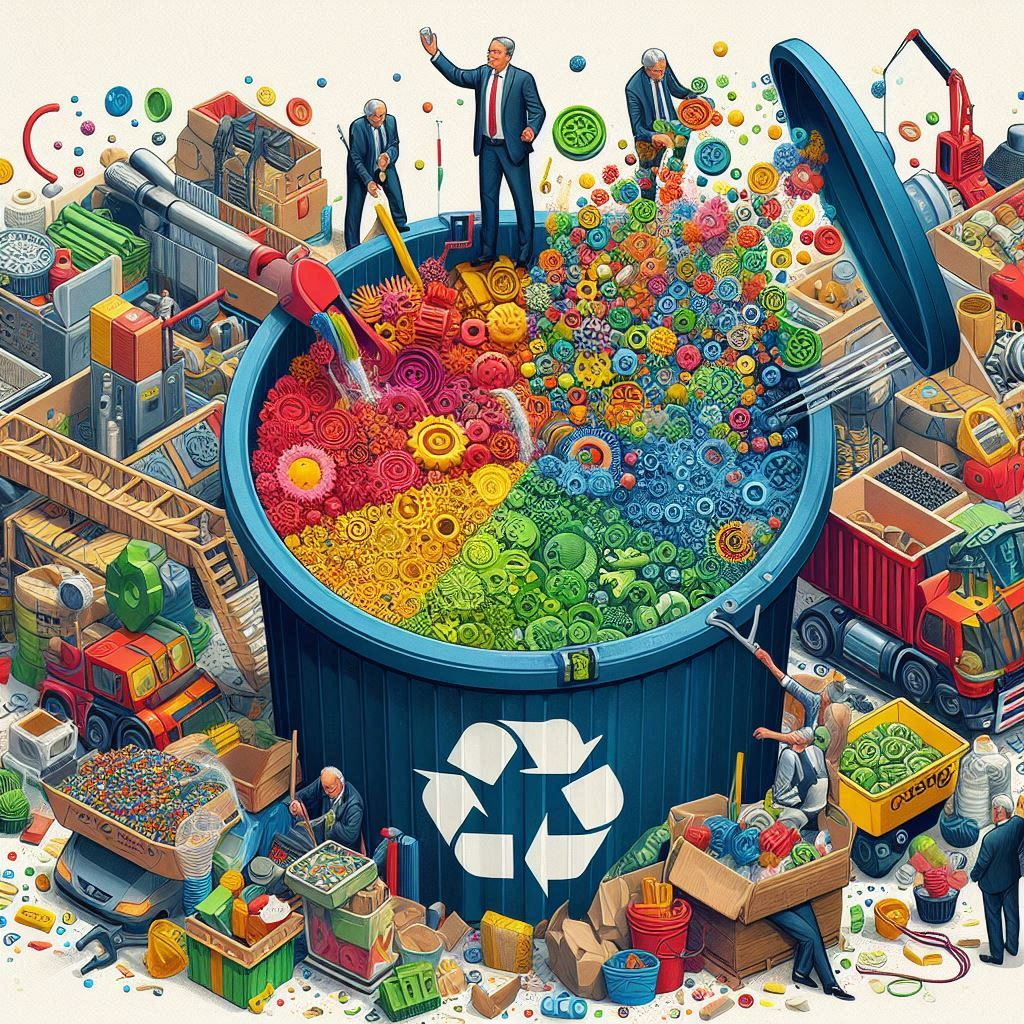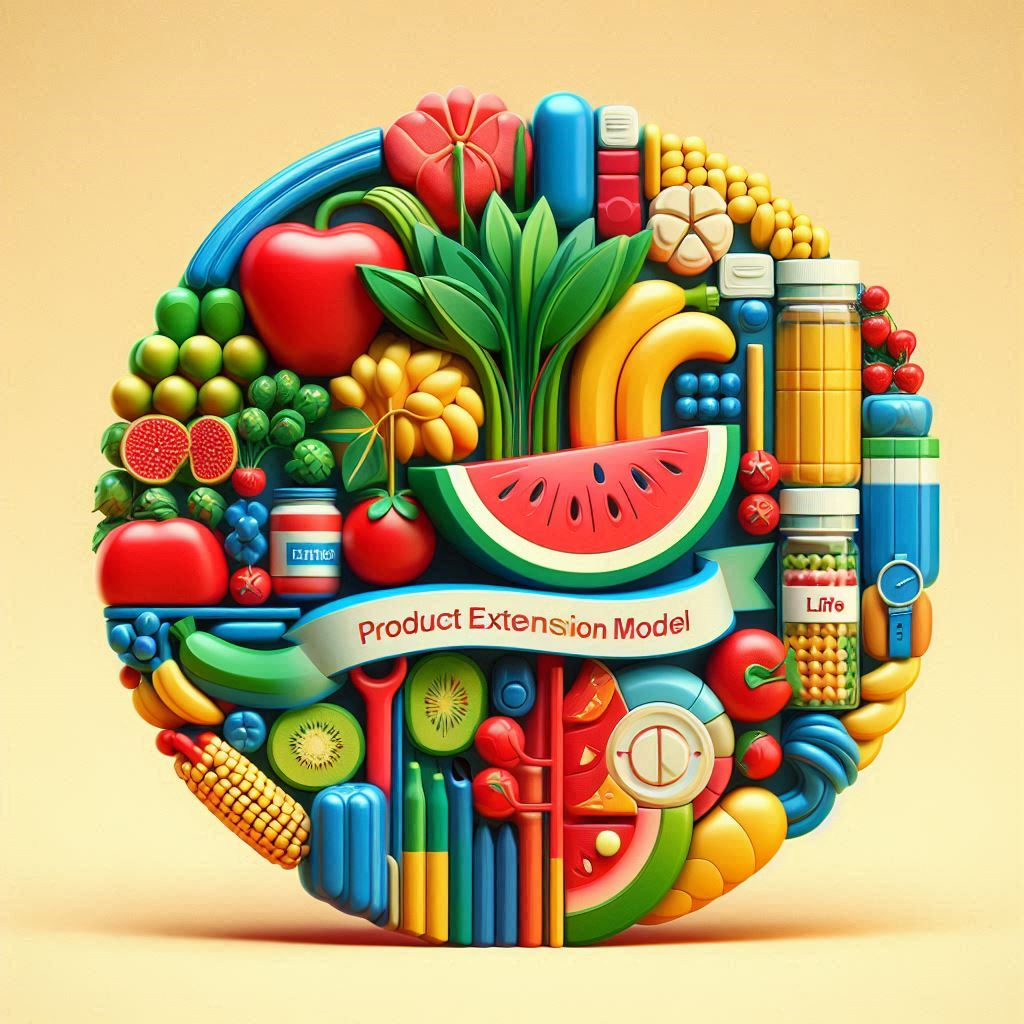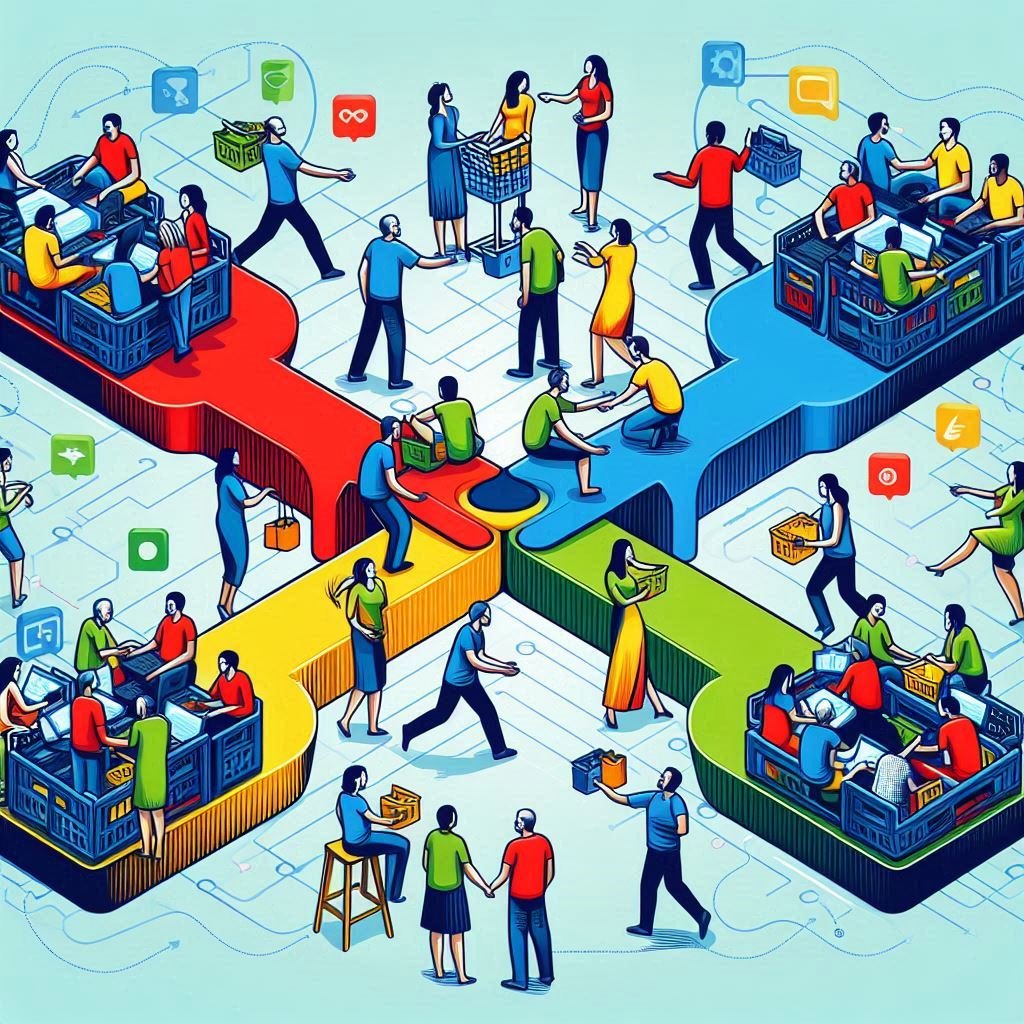Accenture’s 5 Circular Business Models
The global population is growing and moving to cities. The old way of producing things and throwing them away is not working anymore. But, there is a new idea called the circular economy. Accenture has come up with five ways businesses can be more circular. These ways are good for the environment and make money too. Companies like Royal DSM, Disney, Caterpillar, and Philips already use these new models. They are changing how we think about being eco-friendly and making a profit.
Let’s seehow these new business models are helping the planet and businesses succeed.
What are Circular Business Models?
Circular business models use renewable, recycled, or highly recyclable inputs to eliminate waste and pollution.
Companies implementing these models benefit from:
- Lower costs
- Recurrent income sources throughout the product’s usage cycles
- More climate-friendly products
Transitioning to circular business models requires:
- A shift in focus from volume to performance
- Maximizing product usage and extending product life
Companies must:
- Engage in continuous customer engagement
- Adopt circular design principles
- Effectively manage return chains to extract all recoverable value from products
Accenture’s Circular Advantage report highlights how implementing circular business models can:
- Cut costs
- Generate revenue
- Enhance customer value
- Drive competitiveness
By leveraging digital technologies, data analytics, and innovative services, companies can effectively transition to circular business models and contribute to economic growth while reducing resource consumption and waste.
Successful examples include companies like Royal DSM, Caterpillar, and Philips, who have embraced circular supply chains, resource recovery, product life extension, sharing platforms, and products-as-a-service to create high-performance businesses focusing on sustainability and resilience.
Accenture’s Approach to Circular Economy
Driving Sustainability Through Business Innovation
![]()
Circular business models are innovative approaches. They focus on careful material flow management through product design, reverse logistics, and cross-sector collaboration.
Accenture’s Circular Advantage report highlights five circular business models. These models help companies increase resource productivity, reduce costs, boost revenue, and improve customer value and differentiation.
Examples, such as Royal DSM, Caterpillar, and Philips, showcase how companies benefit from circular supplies, resource recovery, and product life extension models. These models create new revenue streams, cut emissions, and enhance national energy security.
By adopting circular business models, companies can drive sustainability and innovation. They promote economic growth while efficiently managing natural resources and waste. Strategies like recycling, remanufacturing, and product-as-a-service models enhance competitiveness and support the circular economy’s aim of turning waste into wealth.
These practices help companies cut resource consumption, strengthen supply chains, and address environmental concerns. By aligning with regenerative principles, businesses can contribute to a model that benefits the economy and the environment.
Circular Supplies Model

Implementing Sustainable Sourcing Practices
Companies wanting sustainable sourcing practices in their supply chain can follow Accenture’s circular business models. This means shifting to a circular economy mindset. By doing this, businesses can convert waste into wealth, use fewer resources, and promote economic growth sustainably.
To make this shift, companies should adopt circular design principles, embrace remanufacturing, and create circular supply chains focusing on recovery and recycling. Accenture highlights the role of digital technologies, data analytics, and ongoing customer engagement in enabling this change.
Case studies and examples of companies born with a circular approach show the benefits of circular business models. They enhance competitiveness, resilience, and environmental impact. By focusing on strategies like products-as-a-service, extending product life, and sharing platforms, companies can lower their environmental impact, create new revenue streams, and improve customer satisfaction.
Implementing these practices requires a company-wide transformation. This involves aligning talent and leadership with circular strategies to effectively address global operations and limited resources’ challenges.
Resource Recovery Model

Maximizing Value from Waste Streams
Businesses can maximize value from waste streams using circular business models. Strategies like circular supplies, resource recovery, and product life extension help drive sustainability and innovation. Sharing platforms and products as a service is also key in this approach.
These models transform waste into wealth, reduce resource consumption, and enhance competitiveness. By applying circular design principles, companies can establish resilient circular supply chains. They can also promote recovery and recycling while engaging in continuous customer interactions.
The Accenture report “Circular Advantage” showcases success stories like Royal DSM’s cellulosic bio-ethanol and Caterpillar’s remanufacturing program. Through innovative services and digital strategies, high-performance businesses achieve enterprise-wide transformation. This addresses environmental priorities, boosts economic growth, and fosters collaboration within circular networks.
Adopting circular business models that prioritize sustainability, resilience, and circularity is crucial. This helps navigate challenges like resource constraints and fluctuating commodity prices in the global economy.
Product Life Extension Model

Prolonging Product Lifecycles Through Repair and Upcycling
Businesses can prolong product lifecycles through repair and upcycling.
They can embrace circular business models like Accenture’s.
These models focus on transforming waste into wealth.
They emphasize circular design, remanufacturing, and resource recovery.
By shifting to a circular economy, companies can:
- Reduce waste
- Enhance competitiveness
- Stimulate economic growth
Strategies like product life extension, sharing platforms, and products-as-a-service promote sustainability and innovation.
They encourage continuous customer engagement and the creation of re-purposed products.
Digital technologies, data analytics, and circular supply chains can optimize resource consumption.
This can drive resilience in resource constraints and fluctuating commodity prices.
Accenture’s approach highlights the value of enterprise-wide transformation.
It underscores the need for innovative services and a focus on environmental priorities.
This can create high-performance businesses that contribute to the circular economy’s goals.
Businesses can leverage circular networks and return chains through case studies and global operating models.
This can support the goal of prolonging product lifecycles through repair and upcycling.
Sharing Platforms Model

Facilitating Peer-to-Peer Exchanges and Collaborative Consumption
Implementing strategies like sharing platforms and product-as-a-service models can help businesses. These strategies facilitate peer-to-peer exchanges and collaborative consumption.
Companies can effectively support collaborative consumption by promoting a circular economy and business models. This can lead to benefits such as waste to wealth creation, increased economic growth, competitiveness through innovation, and resource efficiency.
Companies that adopt circular design, advanced digital technologies, and resilient supply chains can expect higher performance and customer engagement.
Practices like remanufacturing, recycling, and circular supply chains allow businesses to use repurposed products, creating sustainable and efficient operations.
Real-world case studies of successful companies show how embracing circular networks and digital strategies can drive continuous customer engagement.
Leading Companies Embracing Accenture’s Circular Business Models
Leading companies have embraced Accenture’s Circular Business Models. They implement strategies such as waste to wealth, circular design, and resource recovery.
These companies integrate sustainability initiatives into their business models. They focus on circular supply chains, remanufacturing, and product life extension.
Companies like Eileen Fisher create competitive advantages using digital technologies and innovative services. They focus on resource consumption, resilience, and continuous customer engagement.
Accenture’s Circular Business Models help high-performance businesses rethink their procurement, product design, and return chains, leading to enterprise-wide transformation.
Through case studies and global operating models, these companies show the value of circular networks, digital strategies, and data analytics. They create a sustainable and profitable business ecosystem.
Accenture’s Circular Business Models address resource constraints and environmental priorities. They drive economic growth, reduce raw material prices, and enhance competitiveness in the global economy.
Eileen Fisher’s Sustainability Initiatives

Promoting Circular Inputs in the Fashion Industry
To promote circular inputs in the fashion industry, companies can take these steps:
Implement strategies such as waste to wealth, circular design, and circular supply chains.
Shift focus from waste disposal to resource recovery and recycling.
Create value from previously discarded materials.
Accenture’s Circular Advantage report identifies circular business models that can be leveraged to:
Generate resource productivity improvements.
Enhance customer value.
Companies can also:
Adopt innovative services like products-as-a-service.
Offer product life extension to extend the lifespan of products and minimize waste.
Embracing circular strategies can drive:
Economic growth.
Competitiveness.
Sustainability in the fashion industry.
Through continuous customer engagement, re-purposed products, and efficient return chains, companies can:
Create high-performance businesses.
Contribute to a circular economy.
Incorporating digital strategies, data analytics, and circular networks can help fashion companies to:
Transform operations.
Reduce resource consumption.
Boost resilience in the face of evolving commodity prices and scarce resources.
How Accenture’s Circular Business Models Create Competitive Edge
Harnessing Circular Economy Principles for Competitive Advantage
Companies can use Circular Business Models to gain a competitive edge. They can do this by offering innovative services like sharing platforms and products-as-a-service.
Accenture’s approach to Circular Economy helps businesses drive sustainability and innovation. This creates a competitive advantage through circular supply chains, resource recovery, product life extension, and circular inputs.
These business models focus on turning waste into wealth, circular design, and recovery and recycling. This helps companies reduce resource consumption and operate more sustainably.
By adopting circular business models, companies can improve their competitiveness and aid in economic growth and resilience. Accenture also emphasizes using digital technologies, data analytics, and continuous customer engagement. This enhances the effectiveness of circular strategies, helping companies transform their operations and adjust to changing consumer trends.
Accenture presents case studies and examples of successful businesses to demonstrate the benefits of moving towards circular practices—this positions companies as leaders in the global economy.

Vizologi is a revolutionary AI-generated business strategy tool that offers its users access to advanced features to create and refine start-up ideas quickly.
It generates limitless business ideas, gains insights on markets and competitors, and automates business plan creation.


